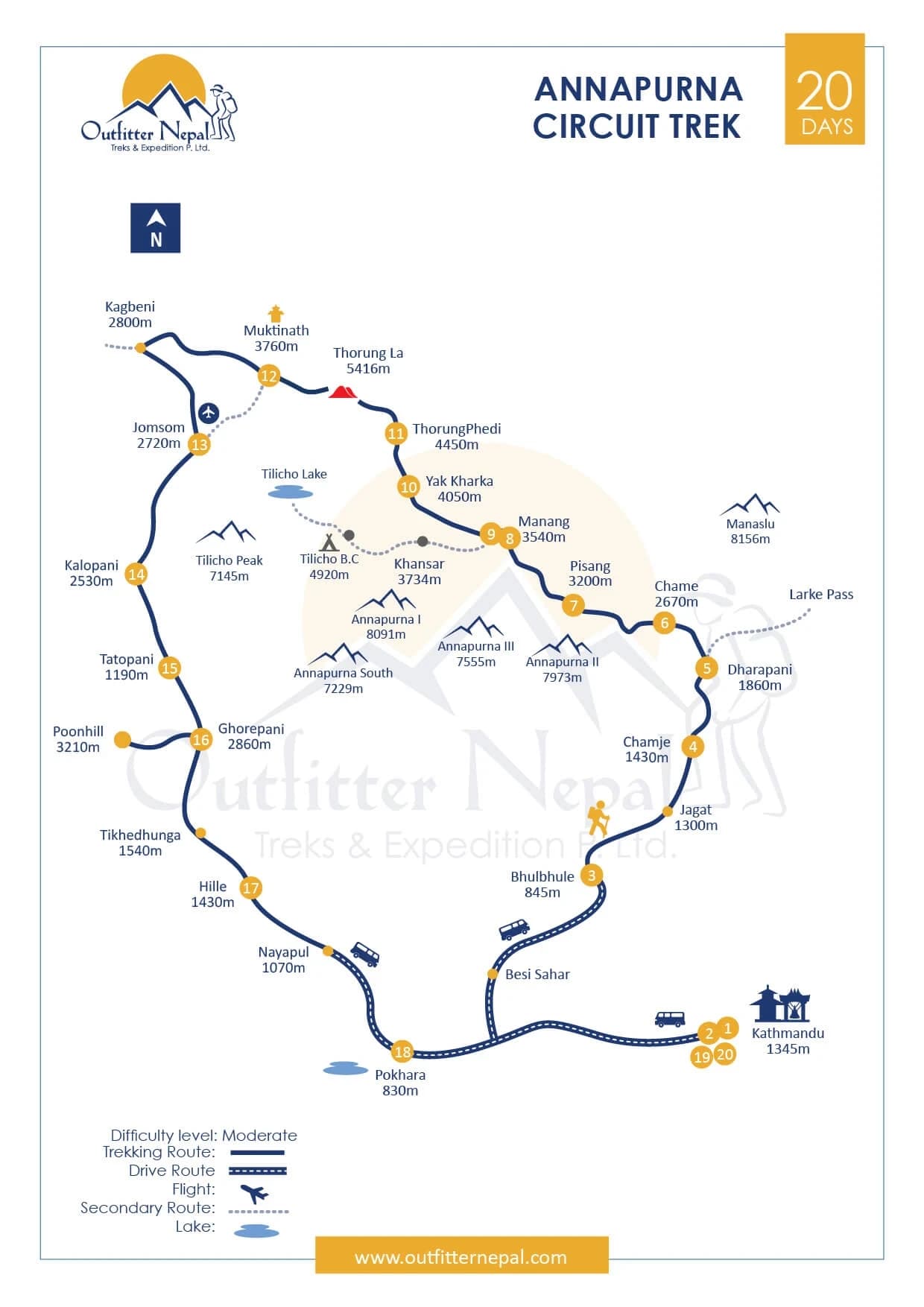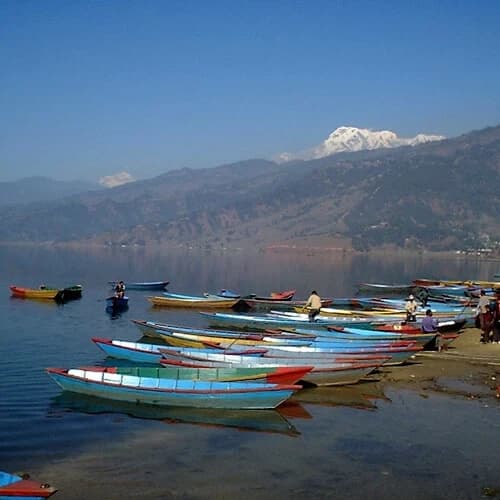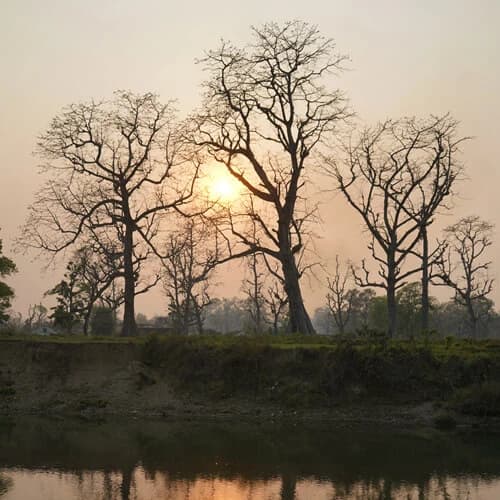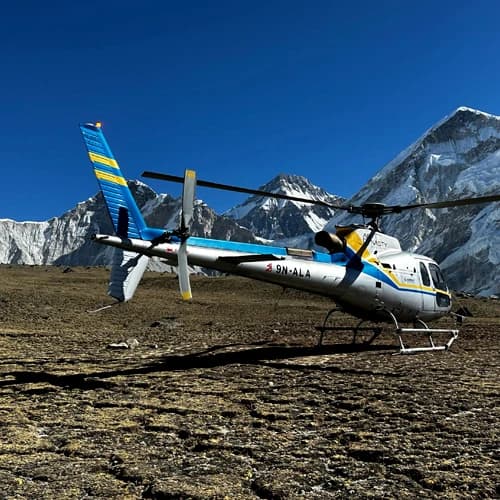Best Features of the Classic Annapurna Circuit Trek with Poon Hill
- Enjoy a relaxing road journey from Kathmandu to Bhulbhule, through the suburbs, village settlements, and hills.
- Hike through the Annapurna Conservation Area, an ecological protection zone containing diverse subtropical forests, plantlife, and elusive animal species.
- Conquer the Thorong La Pass (5,416 m/17,769 ft), the highest point of the trek, which rewards you with a breathtaking panorama of the Himalayan range, including Annapurna (8,091 m/26,545 ft), Dhaulagiri (8,167 m/26,795 ft) , and Manaslu (8,163 m/26,781 ft).
- Encircle the majestic Annapurna Massif and witness the transformation from tropical lowlands to an arid alpine landscape, providing travelers with unique vistas along the trail.
- Gaze upon the Kali Gandaki Gorge (2,520 m/8,270 ft), the deepest in the world, and the pristine Gangapurna Lake (3,440 m/11,286 ft).
- Spend a relaxing acclimatization day at Manang village (3,540 m/11,614 ft), learning about the local Tibetan Buddhist culture and exploring ancient monasteries, gompas, and traditional shrines.
- Visit the sacred Muktinath temple (3,710 m/12,172 ft), a revered pilgrimage site for both Hindu and Buddhist followers, and bathe in 108 cow-faced spouts, which are believed to remove negative karma.
- A scenic early morning to Poon Hill (3,210m/10,531 ft), where trekkers can witness the glorious sunrise illuminating the Annapurna and Dhaulagiri mountain ranges.
- Experience the warm hospitality of the natives during your stay in the teahouses.
- Relax your muscles after the tiring trek in the Tatopani hot spring, which is believed to have therapeutic and healing properties.
- Conclude your journey in the beautiful Pokhara city, spending your remaining time in the vibrant lakeside, relaxing at cafes and restaurants with the trek members.
Overview of the Classic Annapurna Circuit Trek - 20 Days
The Classic Annapurna Circuit is a world-famous, diverse, long-distance trek route in the north-central region of Nepal, within the Annapurna Conservation Area. It encompasses the complete circular journey around the towering Annapurna Massif (8,091 m/26,545 ft), covering approximately 160–230 km. The trek follows the historic route through the Marshyangdi River and the world's deepest Kali Gandaki gorge towards the Thorong La Pass at 5,416 m (17,769 ft).
Our 20-day Classical itinerary is designed to slow the pace, blending physical challenges with immersive cultural experiences. You will be walking approximately 5 to 8 hours, making the trek moderately difficult, and achievable for beginners who can commit to a fitness regimen. Additionally, acclimatization at strategic points in Manang minimizes the risk of altitude sickness and helps you recover from the strenuous hike.
As you follow the classic trail, the landscape changes from farmlands and subtropical forests to high-altitude arid deserts and glacial valleys. En route, you will be staying in traditional teahouses run by the local families of the community. This encounter allows you to witness their authentic mountain lifestyle, multiculturalism, and the traditions of the native people. The region is home to Tibeto-Burman ethnic groups, including Magar, Gurung, Manangi, and Thakali.
As your trekking companion, Outfitter Nepal offers you professional local expertise guides and quality service, a small group with reasonable trip cost, ensuring your Classic Annapurna Circuit Trek is genuinely one of the best experiences of your life. With over 15 years of experience, we guarantee your safety, allowing you the flexibility to adapt your journey to your specific needs. Take the next step—secure your dates and start preparing for your Himalayan ascent today!
What Travelers Should Know About the New Jeep Roads
We understand that you might be concerned regarding the impact of road construction on the Classical Annapurna Circuit trail. Recently, jeep tracks have been developed on some sections of the route, particularly in the lower Marsyangdi and Kali Gandaki valleys, to facilitate easier access to the region. Rest assured, the original spirit of the trek remains preserved. Our 20-day itinerary is designed to prioritize an authentic walking experience while minimizing exposure to motor traffic.
This has been made possible by utilizing the New Annapurna Trekking Trails (NATT). These well-marked routes, developed by the Annapurna Conservation Area Project (ACAP), lead travelers to quieter trails and remote villages, offering an off-the-beaten-path trek experience. Additionally, our expert guides, who are local to the region, will ensure that the vast majority of your journey is spent experiencing the scenic beauty, pristine solitude, and immersive cultural encounters of the Annapurna Circuit.
“If You Can Only Trek Once in Your Lifetime, Make it the Classic Annapurna Circuit Trek.” Why do People Say This?
The 20-day Classical Annapurna Circuit Trek is considered to be one of the most beautiful trekking routes in the world. It is hailed as the world's most geographically and culturally diverse long-distance hiking trail, featuring a distinct fusion of ecological changes and scenery. The route you will be walking on is filled with verdant forests, traditional Himalayan villages, terraced farmlands, vibrant flora and fauna, roaring waterfalls, and enormous snow-covered mountains.
Unlike regular treks, which require travelers to return the same way, the second half of the journey unveils a dramatically new vista and different cultural encounters. You will be passing through and staying at villages and ancient settlements with different religious influences, like Hindu and Tibetan. The encounter with the natives, including Gurung, Thakali, and Manangi, allows you to experience their hospitality and learn about their history, heritage, and tradition.
The entire experience during the trek climaxes at the sacred pilgrimage site of Muktinath and the crossing of Thorong La Pass. This profound feeling of physical challenge with spiritual fulfillment is unlike any other. If you want an unparalleled Himalayan experience you'd like to have in your life, the 20-day Classic Annapurna Circuit Trek is undoubtedly the definitive choice.
What does a Typical day on the Classic Annapurna Circuit Trek look Like?
Your day usually begins between 7:00 AM and 8:00 AM with the rejuvenating mountain wind and the sound of trekkers warming up in the teahouse. Our guide will come to your room to give you a wakeup call and inform you that breakfast is ready in the communal dining area. The meal served is often a warm cup of beverage paired with a western-style plate or traditional Nepalese porridge. You will also have other menu options that will provide you with the needed energy for the demanding hike ahead.
Eventually, we will pack our belongings and check out from the teahouse around 8:00 AM. As you head out, you will witness the morning chores and the mountain lifestyle of the natives set in motion. The hike ahead involves walking for approximately 6 to 8 hours through beautiful villages, hamlets, and forests. Along the way, your guide will stop at vantage points and historical sites to provide briefings and insights into these highlights of the journey. Moreover, the trek leader will call for frequent water breaks, during which you can relax and soothe your tired muscles from the hike.
The transition on the trail is rapid; one moment you will be passing through pine and rhododendron forests, and the next, you will be walking alongside ancient Mani walls and gompas. Around noon, we will stop for lunch at a teahouse or lodge on the trail to fuel up for the rest of the trek. Your objective will be to reach the final teahouse destination of the day, where travelers need to arrive by late afternoon, around 4:00 PM–5:00 PM. In the evening, you will gather with the rest of the trek members and the guide at the dining hall or dinner. This meeting is also an opportunity to socialize, prepare, and discuss highlights for the next day, which might be a hike to Poon Hill or an exploration of Gangapurna Lake.





